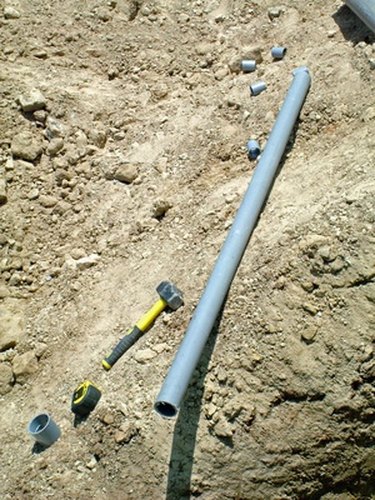
A French drain is also known as a sub-drain, a perforated pipe designed to pull excessive water from soil and away from areas such as house foundations. Installing a French drain prevents ground water saturation. Although sand will work for back-filling a French drain, it is not as good a choice as gravel.
Trench Preparation
Video of the Day
Prior to placing the perforated pipe into the trench, line it with geo-textile filter fabric. Cover the perforated pipe with a filter sock, then place it in the trench on top of the filter fabric.
Video of the Day
Backfill Gravel
The first back-fill should be washed, crushed rock or gravel that is 3/4 to 1 1/2 inch in diameter. Continue to fill the trench until a 12-inch depth remains from the rock up to the top of the trench. Overlap the filter fabric on top of the gravel. The remainder of the trench is then filled with the soil that was dug out when forming the trench.
Sand
The purpose of a French drain is to form a wick effect that will pull moisture from the surrounding soil and let it drain away from the area. Sand compacts and retains moisture, therefore it does not drain as well as gravel. Although sand is not the best choice for back-filling a French drain, it does work well for some other types of drainage systems.